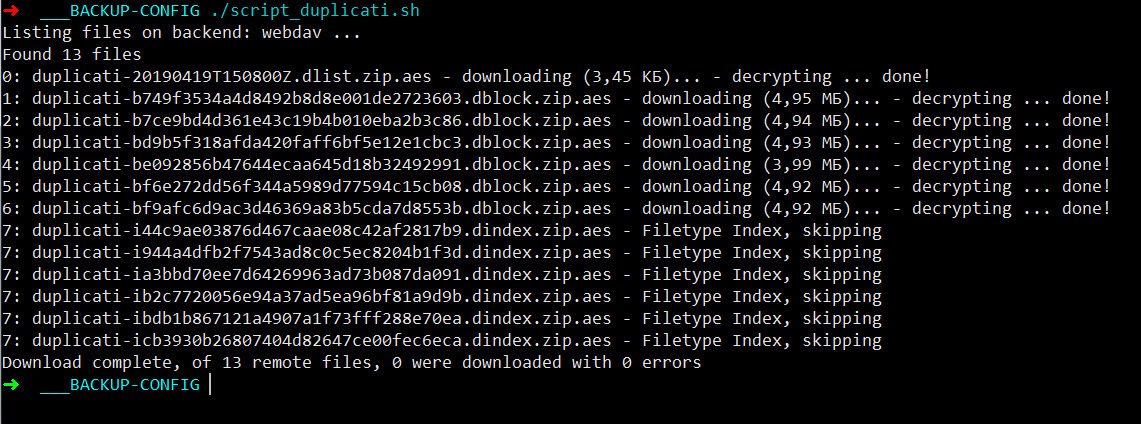

- Duplicacy hash commandline how to#
- Duplicacy hash commandline mac os x#
- Duplicacy hash commandline password#
For more information about exporting the backup job to the command line, see Exporting a backup job configuration. For more information about creating a backup job in the Graphical User Interface, see Creating a new backup job. You can paste this generated command in your favorite task scheduler. Once completed, you can export the backup job to the command line, resulting in a backup command with all settings that you specified in the wizard. Instead of composing the complete backup command yourself, including all advanced options, you can create a backup job in the Graphical User Interface, without scheduling it.

Duplicacy hash commandline password#
Username must not contain : and password must not contain If they do, specify username and password using -auth-username and -auth-password, or url-encode them.Īdd as many advanced options as needed, like -passphrase and -dblock-size. The storage-URL should be specified in this source paths can be specified if they are separated by a space. You can run a backup with the backup command using the following format: This is probably the most important command, after all Duplicati is a backup program. To show the examples, type help example.

The special help topic example will show a few examples of how the Commandline tool should be used to perform some simple operations. So if you need help about the find command, type help find, which will return the following result: To get help about a specific topic, add it to the help command. The Commandline tool provides online help with the special help command. Getting help from the Command Line Tools ¶
Duplicacy hash commandline mac os x#
Linux and Mac OS X users should replace this with duplicati-cli or mono. advanced-option=true ( -advanced-option=false disables the option)įrom this point, only will be used as reference to the Commandline tool. Storage-URL, arguments and advanced-options may or may not be mandatory, depending on the command you execute.Īdvanced options with a value are preceeded with 2 dashes ( -), followed by an equal=sign ( =) and the desired value:Īdvanced options that don't have a value (just turn on an option) can be specified in 2 ways: There are general advanced options and advanced options for specific storage providers. With advanced options you give Duplicati additional information, like the location of the local database, where to store temporary files or information to fine-tune the command you want to execute. For example, if you want to compare 2 backups, you have to specify which 2 backups from the available list Duplicati should compare.ĭuplicati offers a wide range of advanced options. Some commands need additional information. See Storage Providers for more info about specific backends. If the command needs access to the files at the backend, you need to specify the protocol, URL and credentials as the first argument.Įxample: to access /backup with username User and password Pass, using the FTP protocol, the target URL will storage provider has its own set of required and optional parameters. The Commandline tool supports these commands:īackup, find, restore, delete, compact, test, compare, purge, vacuum, repair, affected, list-broken-files, purge-broken-files Supported commands will be described one by one. This tells the Commandline tool what to do. Generally, these arguments need to be supplied: Which arguments you need to specify depend on the command you run with the Commandline tool. Linux and Mac OS X users should type mono or duplicati-cli, which is a wrapper for running mono. The Commandline tool can be used by typing followed by a number of arguments in a command prompt window.
Duplicacy hash commandline how to#
How to use the Duplicati Command Line tool ¶ If you want to perform specific operations, like deleting a particular backup or comparing 2 backups, you will not be able to do this in the Graphical User Interface, but the Commandline tool supports these operations.

You can even do more with the Commandline tool. With the Commandline tool you can perform all operations that are available in the Graphical User Interface. The filename is, the tool can be found in the Duplicati program folder. However, if you can't or don't want to use the graphical user interface and/or the built-in scheduler, you can use the Duplicati Commandline tool. The integrated webserver in Duplicati offers a convenient way to schedule and run backup jobs. Using Duplicati from the Command Line Introduction to the Duplicati Command Line tool ¶


 0 kommentar(er)
0 kommentar(er)
